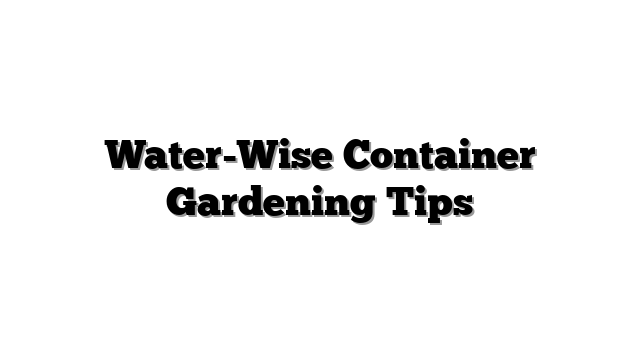Signs Of Overwatering And Underwatering
Seeing your plants struggle hurts. We love our green friends. But sometimes they look sad. Or they just die. Why does this happen? Often, it’s about water.
Watering is tricky. Too much is bad. Too little is also bad. New gardeners make mistakes. Even experienced gardeners mess up. Water problems are very common.
This guide will help you. You will learn plant signs. You will know when water is wrong. We show you how to fix things. We help you water plants right. Happy plants are the goal. We cover signs. We explain why. We offer fixes. We give simple tips. Let’s keep plants healthy.
Overwatering hurts plants a lot. It often causes more harm than too little water. Roots need air. Too much water drowns them. This leads to root rot. Root rot is a big problem.
Look for these signs. They tell you about overwatering.
Yellow Leaves
Leaves turn yellow. This is common. But with too much water? Leaves feel soft. They are mushy. Yellowing starts low down. It moves up the plant. Mushy yellow leaves are a key sign.
Drooping or Wilting Leaves
Strange but true. Too much water makes leaves droop. Damaged roots cannot get water. The plant looks thirsty. But the leaves feel soft. They are limp. They do not feel dry.
Mushy Stems or Base
The plant stem feels soft. It feels mushy near the soil. This means plant parts are dying. The plant might fall over. This is a bad sign.
Mold on Soil
You see white stuff. Or green stuff. It grows on the soil top. This means the soil stays too wet. Air cannot get in.
Algae on Pot
Green stuff grows on the pot. This happens outside the pot. It shows the pot is always wet.
Stunted Growth
The plant does not grow. It stays small. You water it well. But roots are sick. They cannot work right. Growth stops.
Fungus Gnats
Small flies fly around. They stay near the soil. These little flies like wet soil. They are a sign of too much water.
Bad Smell from Soil
The soil smells rotten. It smells bad. This is a sure sign. Root rot is happening below ground.
Brown Leaf Tips
Leaf tips turn brown. Edges might be brown too. A yellow ring might be there. These leaves feel soft. They are not dry and crispy.
Why do these things happen? Roots need oxygen. Water fills soil spaces. Oxygen cannot reach roots. Root cells die. They cannot take up water. The plant suffers. It cannot get food or water. Root rot kills roots. This harms the whole plant.
Check the soil deep down. Push your finger in. Go two or three inches deep. How does it feel? Is it wet? A moisture meter helps too. It measures water level. Don’t just check the top. The surface dries fast.
Underwatering signs are different. They often show up slowly. Plants feel stressed. Lack of water hurts them.
Look for these signs. They tell you about too little water.
Wilting or Drooping Leaves
Leaves lose their firmness. They become limp. They droop down. But these leaves feel dry. They feel crispy. This is different from overwatering wilt.
Dry, Brittle Leaves
Leaves turn brown. They become crispy. They might curl up. They break easily. They may fall off the plant. Yellowing can happen first. Then they turn brown.
Slow or Stunted Growth
The plant grows very slowly. Or it stops growing. Water is needed for growth. Not enough water means no growth.
Dry Soil Pulling Away
The soil shrinks. It pulls away from the pot sides. You see gaps. This means the soil is very dry.
Lightweight Pot
Lift the pot. It feels very light. Wet soil is heavy. Dry soil is much lighter. This is a simple check.
Flowers Dropping
Plant flowers fall off early. The plant saves energy. It drops flowers to keep leaves alive.
Brown, Crispy Leaf Tips
Leaf tips turn brown. Edges get crispy. This is a clear sign of being too dry.
Why do these things happen? Plants need water to live. Water moves food in the plant. Water keeps cells firm. This is called turgor. Without water, cells go limp. Photosynthesis needs water. Plants make food with light and water. No water means no food making.
Check the soil moisture. Use your finger. Push it into the soil. How deep is it dry? Lift the pot. Does it feel light? Learn how dry soil feels. Learn how moist soil feels. This takes practice.
Watering problems are common. Many things cause them. It is not just about water amount. Conditions matter too.
Soil and Drainage
Soil must drain well. Compact soil stays wet. Wrong soil mix holds too much water. Pots need holes. Holes let extra water out. Pots without holes cause root rot. Don’t put pebbles in the pot bottom. This does not help drainage. It can make it worse.
Environment Factors
Light affects water needs. More sun means more water. Less light means less water. Hot weather dries plants fast. Water more when it is hot. Dry air dries plants fast. Low humidity means more water loss. Air moving fast dries plants.
Pot Size and Type
A pot too big stays wet too long. Roots cannot use all the water. A pot too small dries fast. You water all the time. Clay pots dry fast. Plastic pots hold water longer.
Plant Type
Every plant is different. Some like dry soil. Succulents need little water. Some like wet soil. Tropical plants need more water. Know your plant’s needs.
Watering Schedule
Don’t water just because it is Tuesday. Check the soil first. A strict schedule can cause problems. The plant needs water when it needs water. Not on a calendar day.
Always check soil moisture. Do it before you water. Use your finger. Or use a meter. This is the best way.
Stopping problems is best. It keeps plants healthy. It prevents sick plants.
Choose Right Pot and Soil
Use pots with holes. Always. This lets water drain. Use good potting mix for containers. It drains well. For garden soil, add compost. This helps water drain.
Know Your Plant
Learn about your specific plants. How much water do they like? When do they need water? A plant care guide helps.
Check Soil Right
Learn the finger test. How deep do you check? It depends on pot size. Use a moisture meter. It gives a number. Lift the pot. Feel the weight. Practice these checks.
Have a Flexible Plan
Don’t water every day. Or every week. Water when the soil is dry enough. Water until water comes out the bottom. This wets all the soil. Shallow watering is bad. Water the soil. Don’t water the leaves. Wet leaves can cause diseases.
Change with Weather
Water more in summer heat. Water less in winter. Plants indoors need less water. Adjust for rain outside.
Use New Tools
Some people use smart tools. Sensors check soil moisture. Smart systems water plants for you. This helps keep water just right.
Make checking soil a habit. Do it for every plant. Check before you water.
You can save many plants. Act fast when you see signs.
For Overwatered Plants
Stop watering now. This is the first step. Make sure holes drain. Empty the saucer. Lift the pot up a bit. This helps air flow under it. Give the plant more light. Not direct sun. More air helps soil dry.
Maybe root rot is bad. Gently take the plant out. Look at the roots. Cut off black, soft roots. Rinse the roots. Get new, dry soil. Use a clean pot with holes. Put the plant in new soil.
Cut off bad leaves. Remove soft stems. This helps the plant heal. It saves energy.
For Underwatered Plants
Water the plant well. Put the pot in water. Let it soak up water from the bottom. Or water slowly from the top. Water until soil is wet. Water comes out the bottom.
Give plants more wet air. Some plants like this.
Cut off dead, crispy leaves.
Be patient. Saving a plant takes time. Don’t water too much now. Don’t give it too much water at once.
Don’t feed sick plants. Let them get better first. Watch them closely. Give them good light. Give them good temperature.
Act fast. But don’t do too much. Give the plant time to heal.
People ask many questions. Here are some answers.
Q1: How do I know if it is too much or too little water? Yellow or droopy leaves are confusing.
Check the soil first. Is it wet or dry? Feel the leaves. Are they soft and mushy? That is usually overwatering. Are they dry and crispy? That is usually underwatering. Look where yellowing starts. Bottom leaves first often means overwatering.
Q2: What is root rot? How do I stop it?
Root rot is when roots die. Not enough air gets to roots. Too much water causes it. Stop it by using good soil. Use pots with drainage holes. Let soil dry enough between waterings.
Q3: How often should I water plants?
Don’t water on a set day. Check the soil moisture. Water when the soil is dry enough. This depends on the plant. It depends on pot size. It depends on the weather.
Q4: My pot has holes, but water stays on top. Why?
The soil might be packed tight. Water cannot move through it. You might have the wrong soil type. The drainage holes might be blocked.
Q5: Can I save a plant that looks dead?
Maybe. Check the stem. Scratch it gently. Is there green inside? Check roots. Are they white and firm? If yes, there is hope. Water it well. Wait and see.
Mastering plant watering is important. It is a key skill. Knowing the signs helps a lot. You see the signs. You know what to do. Proper watering means happy plants.
Learn to watch your plants. Look at the soil. These skills are valuable. A recent study showed checking soil cuts plant deaths. Plant experts agree. Soil checks are best. Maybe 60% of plant problems come from wrong water. Knowing the signs helps you fix them.
You can water plants well. It takes practice. Keep watching your plants. They will tell you what they need. You are ready.







